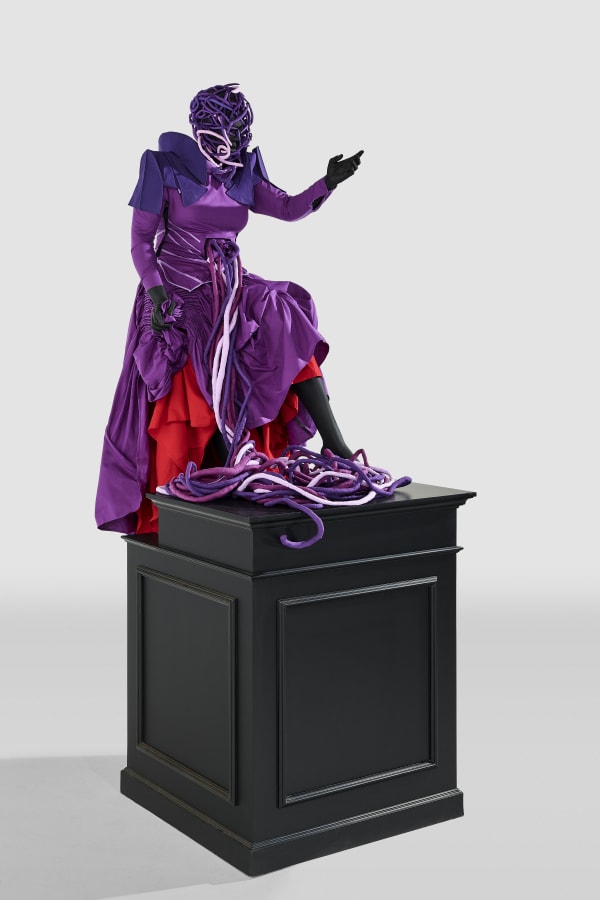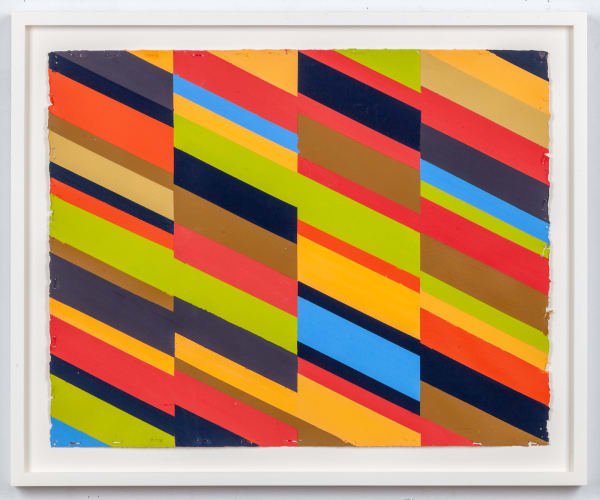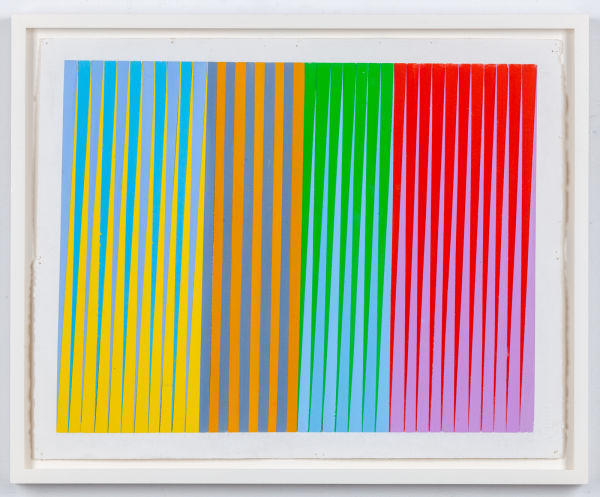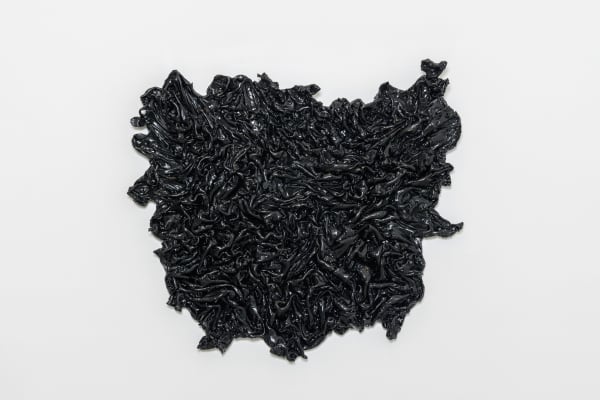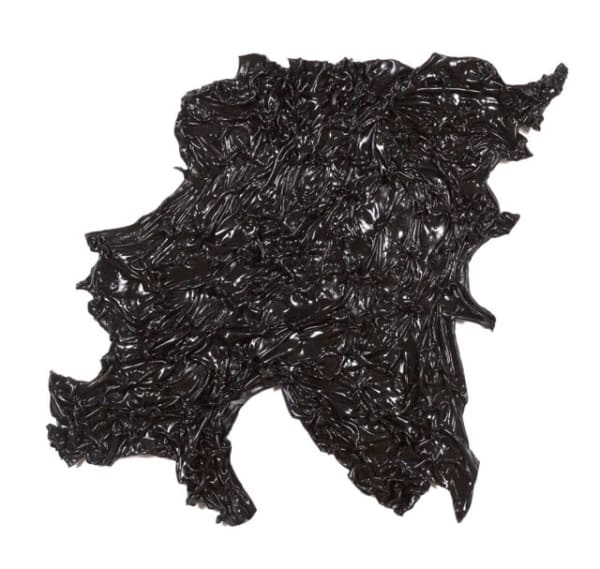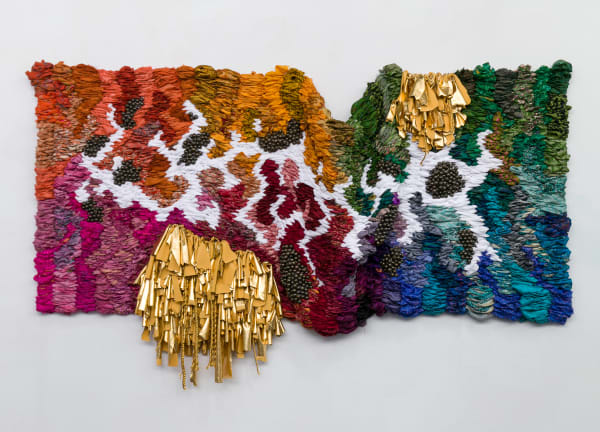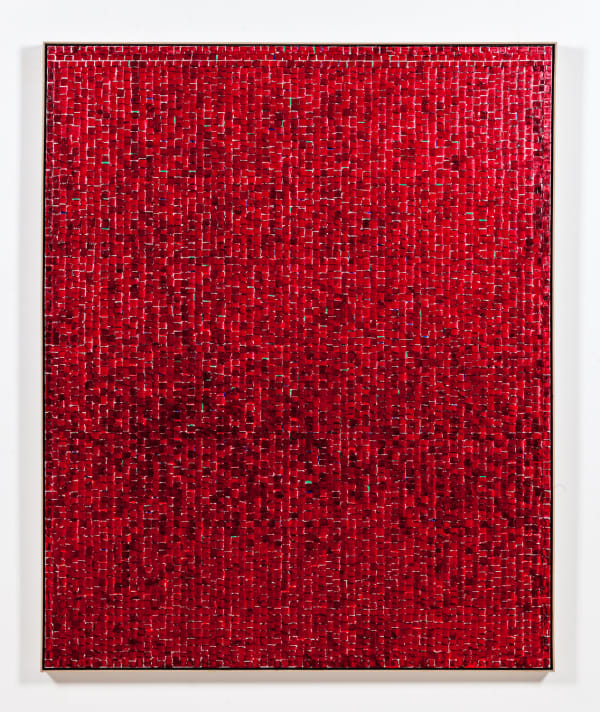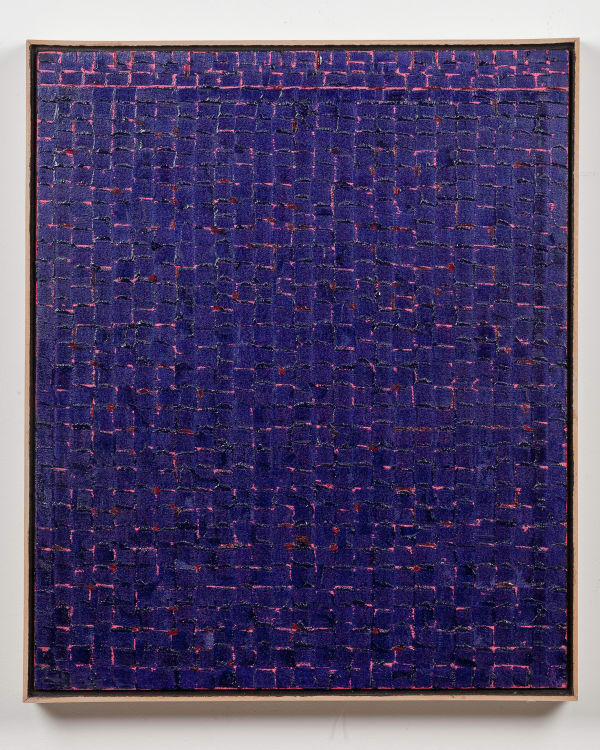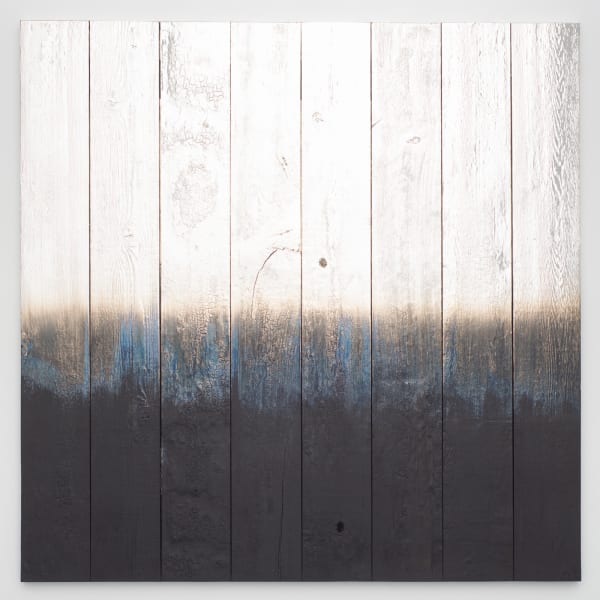-
-

Installation view of Kavi Gupta's presentation in booth A14 at Art Basel Miami Beach 2021.
-

Installation view of Kavi Gupta's presentation in booth A14 at Art Basel Miami Beach 2021.
-

Installation view of Kavi Gupta's presentation in booth A14 at Art Basel Miami Beach 2021.
-

Installation view of Kavi Gupta's presentation in booth A14 at Art Basel Miami Beach 2021.
-

Installation view of Kavi Gupta's presentation in booth A14 at Art Basel Miami Beach 2021.
-

Installation view of Kavi Gupta's presentation in booth A14 at Art Basel Miami Beach 2021.
-

Installation view of Kavi Gupta's presentation in booth A14 at Art Basel Miami Beach 2021.
-

Installation view of Kavi Gupta's presentation in booth A14 at Art Basel Miami Beach 2021.
-
-
For Art Basel Miami Beach 2021, Kavi Gupta presents an array of timely and important works, addressing a range of crucial topics, including intercultural empathy, social justice, and the growing relevance of abstraction to the contemporary art field. Our presentation embodies our effort to amplify voices of diverse and underrepresented artists to expand the canon of art history.
Accompanying our main presentation, we are also proud to be participating in the Kabinett Section of Art Basel Miami Beach with a new site specific installation of work by acclaimed artist and 2021 Rubell Museum Artist in Residence, Kennedy Yanko.
-
-
In conjunction with Haitian-Canadian artist Manuel Mathieu's participation in the Conversation Program of Art Basel Miami Beach, we’ll be debuting a selection of new large-scale paintings Mathieu in our booth. Mathieu will be in a conversation with Haitian-American writer Edwidge Danticat about artistic influences, moderated by Hans Ulrich Obrist, Artistic Director of the Serpentine Galleries in London.
-
-
The Power Plant: Interview with Manuel Mathieu
-
-
Japanese-born, New York-based artist Tomokazu Matsuyama starts every new painting by perusing existing images of his dual worlds. He browses fashion magazines and advertisements looking for distinctively contemporary Western visual elements. He scans historic texts in search of visual cues to something older and idiosyncratically Japanese. From a broad mix of sources, he amalgamates scenes in which figures reminiscent of fashion models don clothing that evokes traditional Japanese garments while inhabiting backgrounds that echo Shogun-era screens, littered with the detritus of the modern city, such as potato chip bags, cigarette packs, and junkyard tires.
-
How Tomokazu Matsuyama Appropriates Images to Create Fine Art
-
-
Mary Sibande is a sculptor, painter, and installation artist whose work not only interrogates the current intersections of race, gender, and labor in South Africa, it actively rewrites her own family’s legacy of forced domestic work imposed by the then-Apartheid state. Through photography and sculpture, Sibande employs the human form as a vehicle for a focused critique of stereotypical depictions of women, particularly Black women in South Africa. For Sibande, the body is the site where history is contested and where Sibande’s own fantasies can play out.
-
In Conversation: Mary Sibande and Lanisa Kitchiner
-
-
In conjunction with Jeffrey Gibson's appearance as the premier artist in the Art Basel Miami Beach Conversation Program, and his current solo exhibition, Beyond the Horizon, in our Elizabeth Street gallery in Chicago, we are proud to show work from three of Gibson's groundbreaking new bodies of work. These works continue Gibson's long-running investigation into the politics of context and cultural representation.
-
-
-
-
In the lead-up to the Whitney Biennial 2019, we visited five artists in their studios to learn more about their work. The first episode of the series features Jeffrey Gibson in his studio in Hudson, NY. Gibson discusses the inspiration for his sculptures—garments and a flag that greets visitors over.
Meet the Artist: Jeffrey Gibson
-
-
James Little is an American abstract artist whose distinctive aesthetic language is rooted in geometric shapes and patterns, flat surfaces, and emotive color relationships. Little utilizes a method similar to the encaustic painting technique used by ancient Egyptian and Greek artists, blending handmade pigments with hot beeswax. While developing his unique position within contemporary abstraction, Little has devoted decades to rigorous academic study of color theory, pictorial design, and painting techniques. His practice embodies the complementary forces of simplicity and complexity. “I’m not cutting edge,” he says. “I’m just trying to stand up next to the great paintings of the past. It’s like building a building. The things that are going to make it stand are the same as they’ve always been. You have to have a solid foundation. I approach painting the same way.”
-
-
Installation view of Kavi Gupta's presentation in booth A14 at Art Basel Miami Beach 2021.
-
-
-
Los Angeles-based artist Kour Pour is a leading voice in the field of intercultural representation. Born in the United Kingdom to an Iranian father and British mother, Pour recalls the most common question he has been asked throughout his life: “Where are you from?” He would always answer with the name of the town where he grew up, but what people were really inquiring about was his bi-cultural heritage. Pour began asking the same question about all kinds of things, especially art. If everything is influenced by something else, and culture and information flow freely around the world—today more than ever—how can we declare with certainty where anything is truly from? Pour keenly addresses this question in his long-running series of Persian Carpet paintings. Including influences from China, India, Japan, Korea, Russia, and Europe, what appears at first like an isolated cultural product—the Persian carpet—is actually representative of the continuous global exchange of images, processes, materials, and ideas.
-
In Conversation | Kour Pour
-
-
Devan Shimoyama is a visual artist whose work explores depictions of the Black, queer, male body. Through the media of painting, sculpture, printmaking, and installation, he creates compositions inspired by art history. However, Shimoyama's use of materials is distinctly contemporary, as is the subject matter he depicts. Shimoyama has stated that he wants the figures in his work are perceived as "both desirable and desirous." He is aware of the politics of queer culture, and the ways in which those politics relate to black American culture. These elements come together in his works in a way that is both celebratory and complicated. The celebratory aspects of Shimoyama's work come through in his choice of materials. Employing such things as fur, feathers, glitter and costume jewels like rhinestones, and sequins, he brings shine and dimensionality to his surfaces. These materials add to the sense that the figures in the works possess a sort of magical aura, and joyful spirit.
-
"Devan Shimoyama: Cry, Baby" at The Warhol
-
-
Inka Essenhigh is renowned for her dreamlike paintings, which translate her encounters with, and intuitions about, contemporary society into haunting, playful, sometimes disturbing visual scenes. her most recent series, titled Uchronia, envisages a hypothetical, idyllic future for the inhabitants of Earth. Essenhigh employs a mix of automatism, imagination and “inner vision” to translate the visible world into arabesque enamel paintings that reveal the unseen worlds of energy, feeling and mystery that lurk just beyond everyday life. She paints landscapes from her imagination into which the eyes and minds of viewers might temporarily abscond. Employing a mix of narration, symbolism and mystery, her paintings explore what about nature can be known and what lurk beyond our perception.
-
Inka Essenhigh: A Fine Line at the Virginia Museum of Contemporary Art
-
-
Beverly Fishman employs a variety of techniques to explore technological, scientific, and biological systems of perception and representation, instigating constructive conversations about the ways people see their bodies and minds and form their identities. Her most illustrious works engage with the visual language of the medical industrial complex. Her highly polished Pill reliefs utilize pharmaceutical forms as the basis for seemingly abstract compositions that radiate with color.
-
The Society for Contemporary Art presents Beverly Fishman
-
-
African-Canadian artist Esmaa Mohamoud (b. 1992, Canada) describes her studio practice as an examination of “the monolithic versus the multitude.” Her work is a visually stunning and profound examination of the gap between contemporary culture's oversimplification and diminishment of Black people, compared to the complexity, richness, and diversity of their actual lived experiences.
-
The Creators: Esmaa Mohamoud I NBA XL
-
-
Allana Clarke is a Trinidadian-American artist whose practice is built upon a foundation of uncertainty, curiosity, a will to heal, and an insistence upon freedom. Fluidly moving through video, performance, sculpture, and text, her research-based practice incorporates sociopolitical and art historical texts, to contend with ideas of Blackness, the binding nature of bodily signification, and the possibility to create non-totalizing identifying structures. Clarke’s latest body of work expresses struggle and ritualistic transformation through sculptures made from hair bonding glue, a liquid latex commonly used to adhere hair extensions onto a person’s scalp.
-
-
Allana Clarke, Pandemic Oral History Project, Archives of American Art, 2020
-
-
Alisa Sikelianos-Carter: Mixed Media Visual Artist | AHA! A House for Arts
-
-
Deborah Kass is an American artist whose work explores the intersection of pop culture, art history, and the construction of self. Kass is a fan of popular culture and a rigorous student of art history, and considers all of the existing artistic content as useful material from which to draw. She has gotten the most attention for her appropriation of Andy Warhol’s signature screenprints. Kass uses the Warhol technique to create empowering, feminist images of females from art history and popular culture. Says Kass, “I use history as a readymade. I use the language of painting to talk about value and meaning. How has art history constructed power and meaning? How has it reflected the culture at large? How does art and the history of art describe power?”
-
Deborah Kass in conversation about Painting & Sculpture
-
-
Suchitra Mattai is a multi-disciplinary artist whose work tells visual stories that touch on her Indo-Caribbean lineage. Blending painting, sculpture and installation with methods suggestive of domestic labor which she learned from her grandmother, such as sewing, embroidery and crocheting, the work addresses such topics as the legacy of colonialism, and relationships between culture and gender roles.
-
Artist Spotlight | A Studio Tour with Suchitra Mattai: Interviewed by Lauren Haynes
-
-
Su Su creates fantastical, dreamlike oil paintings that offer a new and unique understanding of intercultural exchange—a jittery, beautiful hybrid of mass media, pop culture, history, and memory with the capacity to shape our understanding of our interconnected world. By blending references to American cultural icons such as Walt Disney characters with images from Chinese art history, such as peaches and flowers taken from vases in the Metropolitan collection, Su Su’s works speak to the complicated and confusing experiences she has had as an immigrant to the United States.
-
-
Michi Meko is a multidisciplinary artist whose works engage metaphorically and abstractly with the paradoxes and contradictions that have shaped his personal history and the shared history of Black Americans, particularly in the American South. His work creates a transformative and transcendent space in which viewers experience the weight and pressure of feeling threatened, while simultaneously encountering a romanticized psychological and physical space that feels creative and full of possibility.
-
-
Turbulence. Poetry. Darkness. Hulu visits Atlanta Artist in Residence Michi Meko in “the South’s Black Mecca” to explore his original approach to art.
Michi Meko • Artist In Residence • Atlanta
-
-
Alfred Conteh is a painter and sculptor who was born in Fort Valley, GA. His mother is African American, and his father is from Sierra Leone, West Africa. Conteh explores his identity and personal history from a number of different perspectives. He is concerned with the way African Americans are dealing with disparities that have been affecting their communities for generations, especially in the southern United States.
-
-
Jessica Stockholder is an internationally acclaimed visual artist and educator who lives and works in Chicago. Her work is fundamentally abstract, yet interrogates the essential political issue of our time by overtly mobilizing materials recalimed from the consumer waste stream, especially E-Waste. Her public artworks have been commissioned by museums, municipalities, and corporations around the world. Stockholder is an elected member of the American Academy of Arts and Sciences, Guggenheim Fellow, Anonymous Was A Woman grantee, and recipient of the Lucelia Artist Award from the Smithsonian American Art Museum.
-
-
Young-Il Ahn (1934 - 2020) developed a distinctive oeuvre defined by meticulous, abstract paintings that explore his relationship with beauty, nature, and music. Ahn’s most famous body of work, the Water series, has been associated with Dansaekhwa, an aesthetic position specific to Korea characterized by the expression of natural processes through a monochromatic palette.
-
Unexpected Light: Works by Young-Il Ahn
LACMA Preview WITH STEPHEN LITTLE, FLORENCE AND HARRY SLOAN CURATOR OF KOREAN AND CHINESE ART, LACMA AND VIRGINIA MOON, ASSISTANT CURATOR OF KOREAN ART, LACMA -
-
Roger Brown (1941 - 1997) is renowned for using a pop aesthetic to investigate a range of sociopolitical issues. His trademark silhouettes and curvilinear landscapes depict both the topical and uncomfortable. Brown’s work is of startling contemporary relevance, cleverly approaching many topics: the natural and built environment, disaster, religion, popular culture, the art world, art history, eroticism, and sociopolitical concerns, from modern warfare to mortality during the HIV/AIDS crisis.
-
-
Rewind Collective is an anonymous, activist, digital art collective dedicated to spotlighting marginalized voices. Their most recent NFT, Remember Us X, celebrates eight groundbreaking women from across the centuries. The work consists of photographs of Harriet Tubman, Joan of Arc, Marie Antoinette & Frida Kahlo, digitally altered and interwoven with reinterpretations of paintings by female artists Mary Beale, Maria Anna Angelika Kauffmann, Marie-Gabrielle Capet and Adélaïde Labille-Guiard.
-
-
Miya Ando is a multidisciplinary abstract artist whose works reference the ephemerality of nature and the transitory nature of existence. Ando is a practicing Buddhist. The images and forms that she creates reference such fleeting stuff as clouds, moonlight, tides, and the seasons. Her materials—such as steel, glass, and aluminum—convey a sense of durability and strength. Transformed by Ando, materials related to permanence become embodiments of impermanence.























